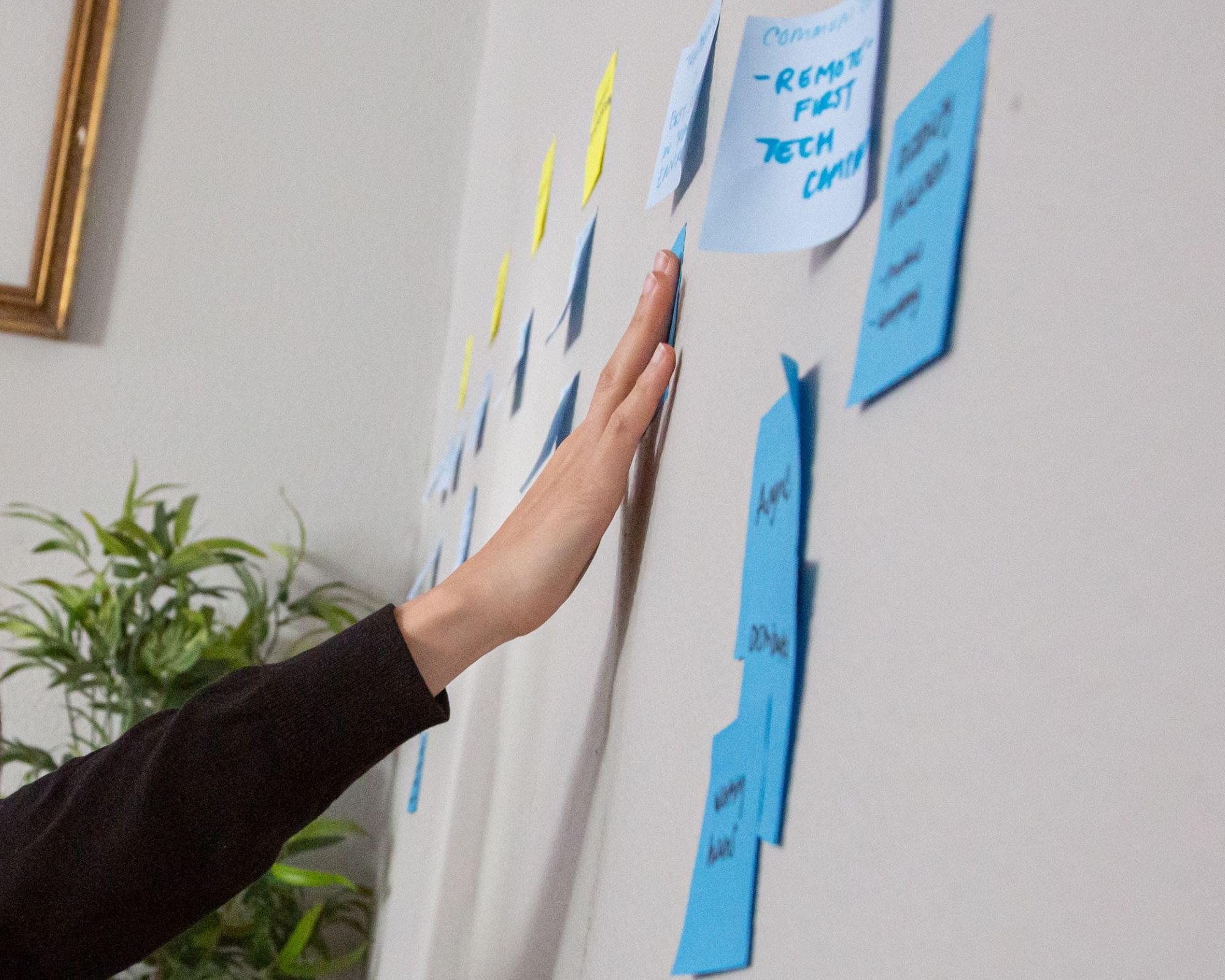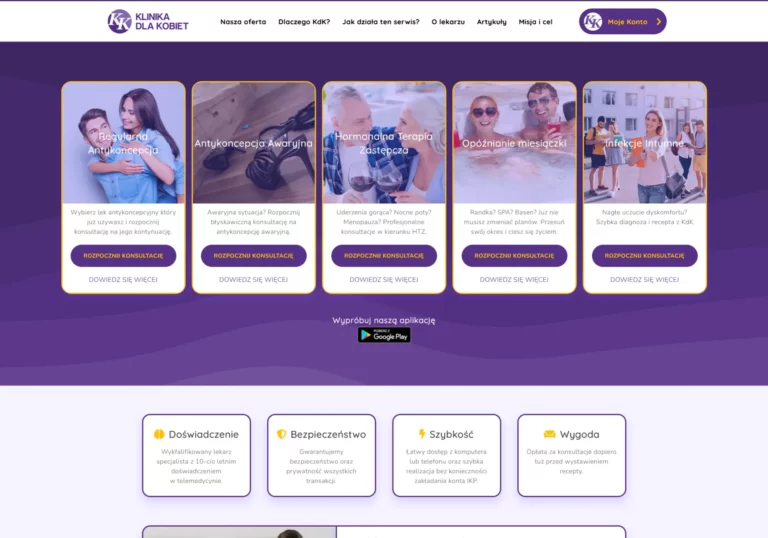Agile is one of the most prominent methods of software development. It allows for quick and easy implementation, management, and changes to the given piece of technology. There is yet another crucial part of the agile approach called agile retrospective. Today, I will shed some more light on its details and nuances.
‘Long time ago in a galaxy far, far away…’ – A few words about a Waterfall model of software development
We could not start a topic of retrospective Agile processes without telling how Agile began. In the early decades of software development, almost every developer used a model called ‘waterfall’. The main principles of this model state that to start a new phase of development, the previous one needs to be completed. Only once all phases are completed, the Client can receive the outcome of our work.
Such a strategy works perfectly well in many areas of life, especially when it comes to creating, or building. For example, no one will present an unfinished painting to the Client nor ask them to move into a house without a roof.
How agile started
Over the years, the waterfall model turned out not to be the best solution in software development. Why? Because the software does not require a total completion to be functional. Instead, it consists of layers (functionalities) that can be added over time and enhance the product gradually. In that way, the Client does not have to wait long for their product to be released. They can also change the expectations of the product based on the effect they can see rather than only imagine. Such abilities help to create a piece of software best tailored to their needs.
The need for a solution to satisfy ever-changing requirements in the ever-changing 21st-century reality – is why the agile model formed.
The twelve rules of the Agile Manifesto
In 2001, a group of developers set the rules of the new approach, the Agile Manifesto. It consisted of twelve points which emphasized:
- Interactions between the developers
- The functionality of the created software
- Effective collaboration with the Clients
- Enhancement of the response to changing requirements
All of the above took priority instead of:
- following strict processes and set plans
- overestimating the value of detailed documentation and contract negotiation
The very last rule of the Agile Manifesto reads:
- At regular intervals, the team reflects on how to become more effective, then tunes and adjusts its behavior accordingly.
The above is the reason agile retrospective was introduced and is an important part of agile software development.
What is an agile retrospective?
Any activity or task we perform can be done better. Reflecting on the processes in place and improving them is what humans constantly do. We retrospect without even noticing it. For example, when going shopping in a new shop we do not know the prices of products, where to find them, how long the queue is going to be, etc. However, after a month of going shopping, we subconsciously improve our shopping skills. We can create our shopping lists according to the shop layout, know exactly how much money we will spend and assess when to visit the shop to avoid long queues. All are based on our retrospective.
An agile retrospective is a process in which a group of developers collaborate on how they could improve their future work. It takes place after a set phase of product development is concluded. Such phases in agile development are called sprints and last about 2-4 weeks.
The importance of agile retro
The general reason for holding agile retro is work improvement. Thanks to the retrospective agile approach principles can be performed better. The team will develop better products quicker, and all processes will be more efficient and cost-effective.
Moreover, everyone in the team can speak and share their opinions or findings. It makes the members feel equally important and therefore has a positive psychological effect. On top of that, the team forms a stronger bond and works more efficiently.
An efficient sprint review also helps in future sprint planning. Taking into consideration team members’ feedback and adjusting the workflow is what agile is all about. Not only when it comes to product development but also to teamwork development.
What are the topics of an agile retro?
Firstly, the team identifies weak moments or parts. Team members share their experiences regarding the technicalities of their work and the collaboration quality. The team point out not only the problems but also the positives of the working experience. No matter what exactly is discussed, the most important part is that at the end of the meeting, the appropriate actions and solutions need to be specified. Thanks to that, certain areas of work can be improved during the next sprint.
Tips for a great agile sprint review
An agile retro is rather a relaxed form of a meeting, conducted to freely share ideas about the sprint. However, there are a few tips to follow to maximize the sprint review effectiveness.
Be frequent but keep it short
It is best to be consistent about agile retro, so hold it every time you finish a sprint. Do not hold a long meeting. The participants will easily get bored. If the agenda consists of many items, it is best to plan breaks in between.
Prepare your agenda
Your agile retro should not be strict but fun. However, a good structure helps in covering all the issues that arose. Make a list of problems that need addressing. Also, keep notes which will be handy during the next sprint review.
Create an action plan and be disciplined about executing it
Any meeting is fruitless without a takeaway. Every agile retro should finish with an action plan. Moreover, each team member should have designated duties to perform or steps to take. This also creates a mutual feeling of responsibility for the whole team’s performance.
Keep the collaboration flowing
The team needs to be engaged and feel comfortable sharing their findings and ideas. The best idea to maintain engagement is to use some of the sprint review techniques. Read on to find out the best ones.
Best agile retro techniques for effective sprint planning
Improvement process is endless as there will always be some tasks that can be done better. However, it does not mean that finding troublesome areas will always be easy. It is, in fact, the opposite. The more sprint reviews, the harder it is to come up with improvements. That is why there are several workflows to stimulate the teams and help them share their thoughts.
One word
It is a great technique to start the sprint review meeting with. The team members describe their feelings towards the past sprint with one word. This technique engages all members to participate in the agile retro from the start.
Question cards
There are several question cards consisting of topics regarding agile principles. Each member draws a card and answers the question it contains.
Start, Stop, Continue
This activity asks the team members to identify the actions and steps taken in future sprints. They fall into three categories: the ones that need to be implemented (start), continued (continue) and stopped (stop).
4 L’s
The 4 L’s stand for Liked, Learned, Lacked, and Longed For. The agile team members point out all elements of the past sprint that fall into these categories.
Need an expert in agile approach and agile retro? Choose Sailing Byte!
Agile methodologies and techniques are very much present in our day-to-day work at Sailing Byte. Thanks to them, we can build apps, websites and software perfectly tailored to your needs. Contact us if you have any questions regarding agile retro and how it enhances our product development process. Schedule time for a meeting to discuss your software ideas.




